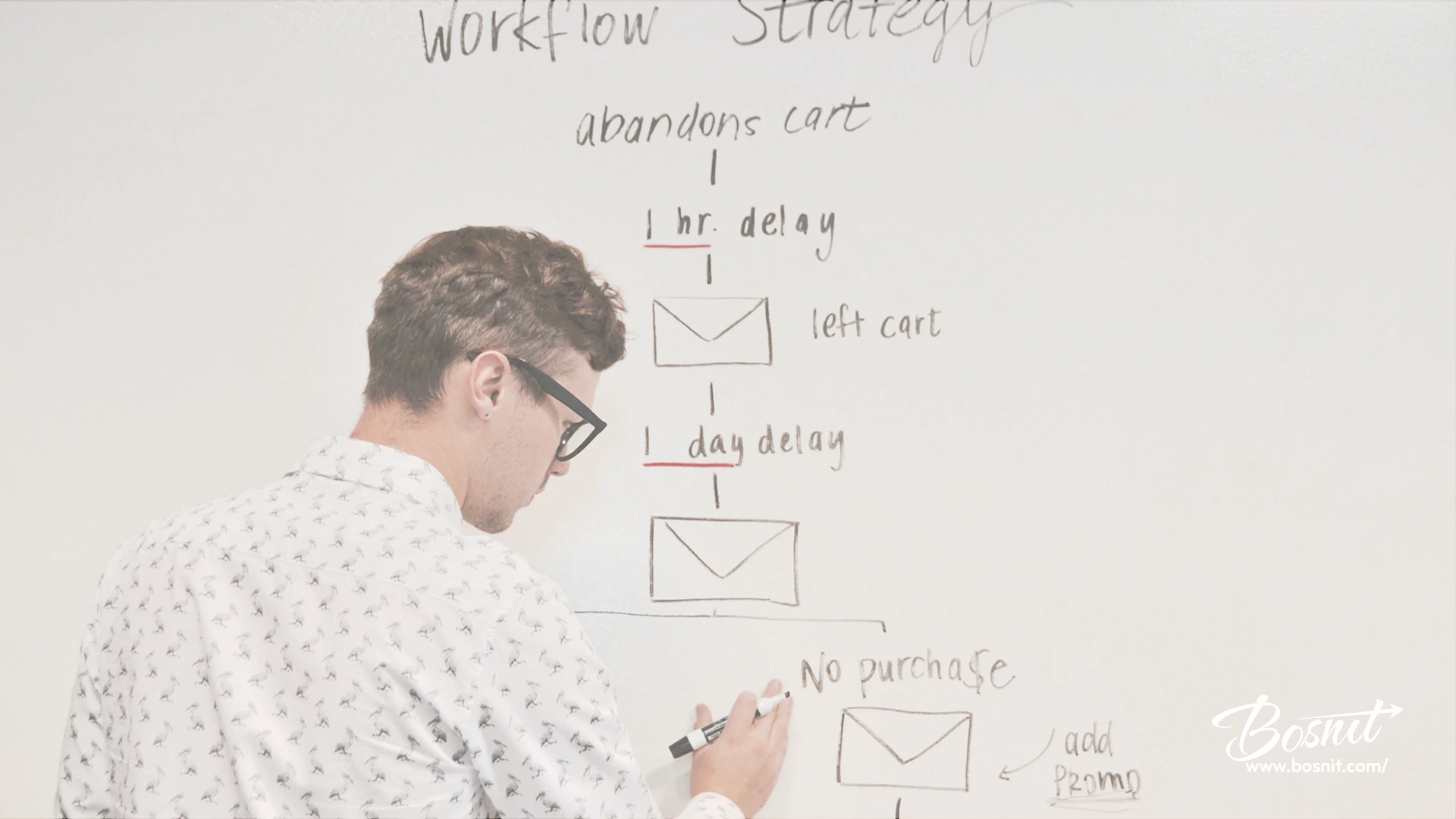As an e-commerce business owner, acquiring new customers is essential for growth and success. However, with so many businesses vying for attention online, it can be difficult to stand out and attract new customers to your brand.
That’s why we’ve put together this list of 5 proven strategies for acquiring new customers for your e-commerce business. From social media advertising to influencer marketing to email campaigns, these tactics are sure to help you reach new audiences and convert them into loyal customers.

1. Leverage the Power of Social Media Advertising
Social media platforms like Facebook, Instagram, and Twitter are powerful tools for reaching new audiences and driving sales. With over 3 billion active users on these platforms, businesses of all sizes can use social media advertising to reach potential customers who are interested in their products or services. By creating targeted ads on these platforms, you can reach potential customers who are interested in your products or services and encourage them to visit your website and make a purchase.
When creating your social media advertising campaigns, it’s important to segment your audience and target specific groups of people. For example, if you sell baby products, you can target ads to parents with children under the age of five. By targeting specific segments of your audience, you can increase the likelihood of conversion and lower your advertising costs.
Another important aspect of social media advertising is to regularly monitor and analyze your campaigns. By using the built-in analytics tools on social media platforms, you can track the performance of your ads and make adjustments as needed. This will help you understand which ads are resonating with your target audience and which are not, so you can optimize your campaigns for better results.
Example of how E-Commerce Business can Leverage the Power of Social Media Advertising
An example of how an e-commerce business can leverage the power of social media advertising is by creating targeted ads on Facebook.
The business can use Facebook’s audience targeting options to reach potential customers who are interested in their products or services. For example, let’s say the e-commerce business sells handmade jewelry. They can target their ads to people who have shown interest in jewelry, fashion, and handcrafted products.
They can also target their ads to specific demographics, such as age, gender, location, and interests. This will ensure that the ads are reaching the most relevant audience and increase the chances of conversions.
The e-commerce business can also use Facebook’s conversion tracking feature to track the performance of their ads. This will allow them to see which ads are performing well and which ones need to be optimized.
By regularly monitoring and analyzing their campaigns, the e-commerce business can make adjustments and optimize their ads for better results. They can also test different ad formats, such as carousel ads, video ads, or lead generation forms, to see which ones perform the best.
Leveraging the power of social media advertising is a proven strategy for acquiring new customers for your e-commerce business. By targeting specific segments of your audience, regularly monitoring and analyzing your campaigns, and making adjustments as needed, you can increase conversions, lower advertising costs, and grow your business.

2. Partner with Influencers in Your Niche
Influencer marketing is a powerful strategy for reaching new audiences and building trust in your brand. By partnering with influencers in your niche, you can tap into their existing audiences and reach new customers who are likely to be interested in your products or services.
Influencer marketing works by leveraging the influence and credibility of popular social media personalities, bloggers, and experts in your niche. These individuals have already built a following of engaged and loyal fans, and by partnering with them, you can tap into their audience and reach new customers who are likely to be interested in your products or services.
When selecting influencers to partner with, it’s important to choose individuals who align with your brand and have a genuine interest in your products or services. This will help ensure that the influencer’s followers are a good fit for your business and that the partnership is authentic and credible.
It’s also important to establish clear goals and objectives for your influencer marketing campaigns. This will help you measure the success of your campaigns and make adjustments as needed.
The best way E-commerce businesses can partner with influencers
The best way for e-commerce businesses to partner with influencers is to find individuals who align with their brand and have a genuine interest in their products or services. This will ensure that the influencer’s followers are a good fit for the business and that the partnership is authentic and credible.
One way to find influencers is to use influencer marketing platforms such as Upfluence, AspireIQ, and Influencer.co. These platforms allow businesses to search for influencers based on specific criteria such as niche, location, audience size, and engagement rate.
Another way to find influencers is to use social media platforms such as Instagram, YouTube, and TikTok. By searching for popular hashtags, accounts, and keywords related to your niche, you can find influencers who are already engaging with your target audience.
It’s also important for e-commerce businesses to establish clear goals and objectives for their influencer marketing campaigns. This will help them measure the success of their campaigns and make adjustments as needed.
When working with influencers, e-commerce businesses should ensure that the partnership is mutually beneficial, and the influencer is given enough information about the product or service they are promoting and the expected outcome. They should also ensure that they are in compliance with the guidelines of the platform they are working with.
In conclusion, e-commerce businesses can partner with influencers in their niche to reach new audiences and build trust in their brand. They can find influencers by using influencer marketing platforms or social media platforms and establish clear goals and objectives for their campaigns.
Partnering with influencers in your niche is a powerful strategy for acquiring new customers for your e-commerce business. By leveraging the influence and credibility of popular social media personalities, bloggers, and experts in your niche, you can tap into their existing audiences and reach new customers who are likely to be interested in your products or services.

3. Build an Email List and Send Targeted Campaigns
Email marketing is one of the most effective ways to reach and engage with your customers. By building an email list and sending targeted campaigns, you can encourage repeat business and keep your customers engaged with your brand.
Email marketing is a cost-effective way to reach your customers and promote your products or services. By building an email list, you can collect the contact information of potential customers and send them targeted campaigns to encourage them to make a purchase.
When building an email list, it’s important to provide value to your subscribers. You can do this by offering exclusive discounts, early access to sales, or other incentives. This will encourage your subscribers to open your emails and take action.
Once you’ve built your email list, it’s important to segment your audience and send targeted campaigns. For example, you can segment your list by customer demographics, purchase history, or interests. By targeting specific segments of your audience, you can increase the effectiveness of your campaigns and improve conversions.
It’s also important to test and optimize your email campaigns. You can use A/B testing to compare the performance of different subject lines, headlines, and call-to-action buttons. By testing different elements of your campaigns, you can find the best-performing variations and optimize your campaigns for better results.
Tips on how to create Email List
- Offer a sign-up incentive: One of the most effective ways to build an email list is to offer a sign-up incentive, such as a discount code, free e-book, or access to exclusive content. This will encourage potential customers to provide their contact information and join your email list.
- Use pop-ups and exit-intent pop-ups: Pop-ups and exit-intent pop-ups are effective ways to capture email addresses from visitors to your website. These types of pop-ups can be used to offer a sign-up incentive or simply ask visitors to join your email list.
- Include a sign-up form on your website: Include a sign-up form on your website in a prominent location, such as the homepage, footer, or sidebar. This will make it easy for visitors to find and join your email list.
- Use social media to promote your email list: Use social media to promote your email list and encourage your followers to join. You can also use social media to share exclusive content or offers with your email subscribers.
- Create gated content: Create gated content, such as e-books, webinars, or tutorials, and only make it available to email subscribers. This will encourage visitors to join your email list in order to access the content.
- Use lead magnets: Lead magnets are a great way to entice visitors to join your email list. Examples of lead magnets include checklists, templates, and quizzes.
- Add a sign-up button in your email signature: Include a sign-up button in your email signature to encourage recipients to join your email list.
Building an email list and sending targeted campaigns is a proven strategy for acquiring new customers for your e-commerce business. By providing value to your subscribers, segmenting your audience, and testing and optimizing your campaigns, you can increase conversions, encourage repeat business, and keep your customers engaged with your brand.
Read Also: 9 Best Exit Intent Popup Plugins for WordPress

4. Use Retargeting to Re-Engage Abandoned Cart Customers
Retargeting is a powerful strategy for re-engaging customers who have abandoned their shopping carts. By displaying targeted ads to these customers, you can encourage them to return to your website and complete their purchase.
Retargeting works by tracking the behavior of potential customers on your website and displaying targeted ads to them as they browse the web. For example, if a customer adds an item to their shopping cart but doesn’t complete the purchase, you can display an ad for that item to them as they browse other websites.
When implementing retargeting, it’s important to segment your audience and target specific groups of customers. For example, you can target customers who have abandoned their shopping carts within the last 24 hours, or those who have abandoned a specific item in their cart. By targeting specific segments of your audience, you can increase the effectiveness of your retargeting campaigns and improve conversions.
It’s also important to regularly monitor and analyze your retargeting campaigns. By using the built-in analytics tools, you can track the performance of your ads and make adjustments as needed. This will help you understand which ads are resonating with your target audience and which are not, so you can optimize your campaigns for better results.
Example of how an e-commerce business can use retargeting
An example of how an e-commerce business can use retargeting to re-engage abandoned cart customers is by using the Facebook Pixel.
The Facebook Pixel is a piece of code that businesses can add to their website to track the behavior of visitors. When a visitor adds an item to their shopping cart but does not complete the purchase, the Facebook Pixel will track that behavior and add the visitor to a retargeting audience.
The e-commerce business can then create a targeted ad campaign on Facebook that is only shown to visitors who have abandoned their shopping cart. The ad can feature the items that the visitor left in their cart and include a special offer or discount to encourage them to complete their purchase.
For instance, if a customer adds a blue dress to their cart but doesn’t complete the purchase, the e-commerce business can show an ad to the customer featuring the blue dress with a special offer, such as 10% off or free shipping, to encourage them to complete their purchase.
The e-commerce business can also use the Facebook Pixel to track the performance of their retargeting campaigns. They can see how many people are clicking on their ads and how many are returning to their website to complete their purchase.
By regularly monitoring and analyzing their campaigns, the e-commerce business can make adjustments and optimize their ads for better results. They can also test different ad formats, such as carousel ads, video ads, or lead generation forms, to see which ones perform the best.
In conclusion, using retargeting to re-engage abandoned cart customers is a powerful strategy for acquiring new customers for an e-commerce business. By tracking the behavior of visitors and creating targeted ad campaigns, businesses can increase conversions, improve the customer experience, and grow their business.
Using retargeting to re-engage abandoned cart customers is a powerful strategy for acquiring new customers for your e-commerce business. By segmenting your audience and targeting specific groups of customers, regularly monitoring and analyzing your campaigns, and making adjustments as needed, you can increase conversions, improve the customer experience, and grow your business.

5. Optimize Your Website and Content for SEO
Search engine optimization (SEO) is essential for driving more traffic to your website and increasing visibility for your brand. By optimizing your website and content for SEO, you can improve your search rankings and reach new customers who are searching for products or services like yours.
SEO involves a range of techniques and strategies that help your website rank higher in search engine results pages (SERPs) for relevant keywords and phrases. This includes optimizing your website’s structure and design, creating high-quality and relevant content, and building backlinks from other websites.
One of the most important elements of SEO is keyword research. By identifying the keywords and phrases that your target audience is searching for, you can optimize your website and content for those terms, making it more likely that your website will rank higher in search results.
Another important aspect of SEO is on-page optimization. This includes optimizing your website’s title tags, meta descriptions, header tags, and images. By optimizing these elements, you can make it easier for search engines to understand the content of your website and improve your search rankings.
Building backlinks from other websites is also an important part of SEO. Backlinks are links from other websites that point to your website. The more relevant and high-quality backlinks your website has, the higher it will rank in search results.
Tips on how to optimize your website and content for SEO
- Conduct keyword research: Conduct keyword research to identify the keywords and phrases that your target audience is searching for. Use this information to optimize your website and content for those terms.
- Create high-quality, relevant content: Create high-quality, relevant content that is informative and valuable to your target audience. This will help to improve your search rankings and drive more traffic to your website.
- Use header tags: Use header tags (H1, H2, H3) to structure your content and make it easier for search engines to understand the content of your website.
- Optimize images: Optimize images by using descriptive file names and alt tags. This will help search engines understand the content of your images and improve your search rankings.
- Build backlinks: Build backlinks from other websites to improve your search rankings. The more relevant and high-quality backlinks your website has, the higher it will rank in search results.
- Optimize meta tags: Optimize meta tags, such as the title tag and meta description, to make it easier for search engines to understand the content of your website.
- Monitor your website’s performance: Use tools such as Google Analytics to monitor your website’s performance and make adjustments as needed.
- Keep your website up-to-date: Keep your website up-to-date with the latest information and make sure it is mobile-friendly.
- Optimize your website’s loading speed: Optimize your website’s loading speed to improve the user experience and improve your search rankings.
- Use schema markup: Use schema markup to add structured data to your website. This will help search engines understand the content of your website and improve your search rankings.
Optimizing your website and content for SEO is a proven strategy for acquiring new customers for your e-commerce business. By conducting keyword research, optimizing your website’s structure and design, creating high-quality content, and building backlinks, you can improve your search rankings, drive more traffic to your website, and reach new customers who are searching for products or services like yours.
Conclusion
In conclusion, acquiring new customers is essential for the growth and success of any e-commerce business. In this post, we’ve discussed 5 proven strategies for acquiring new customers, such as leveraging the power of social media advertising, partnering with influencers, building an email list and sending targeted campaigns, using retargeting to re-engage abandoned cart customers, and optimizing your website and content for SEO.
Each of these strategies offers unique benefits and can be tailored to the specific needs of your business. By implementing one or more of these strategies, e-commerce businesses can reach new audiences, build trust in their brand, and drive more sales.
Some of the relevant keywords discussed in this post include social media advertising, influencer marketing, email campaigns, retargeting, SEO, keyword research, on-page optimization, backlinks, and more. By including these keywords in the post, it can help improve the post’s visibility and search rankings, making it more likely that potential customers will find and engage with the post.
In order to achieve success in e-commerce, it’s important to stay up-to-date with the latest trends and strategies. By consistently experimenting and implementing new tactics, e-commerce businesses can grow their customer base and increase their online presence.
Also read: Best Marketing Strategies in 2023



